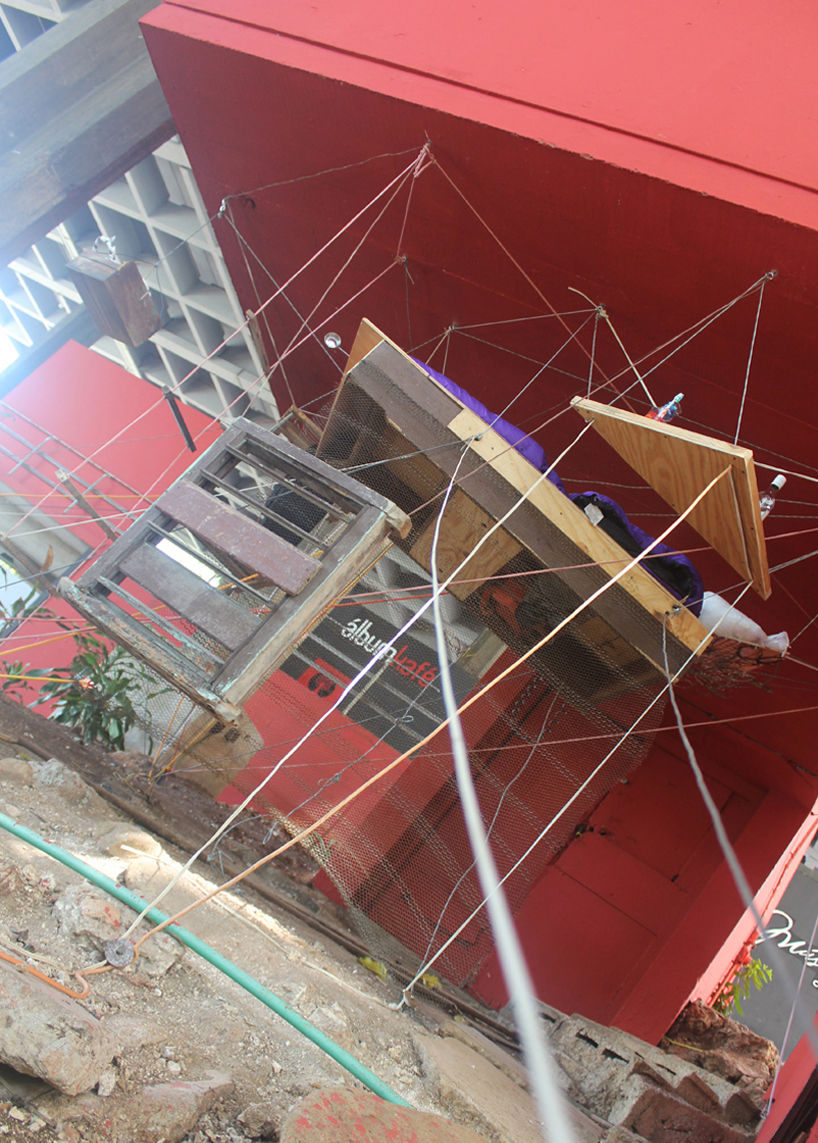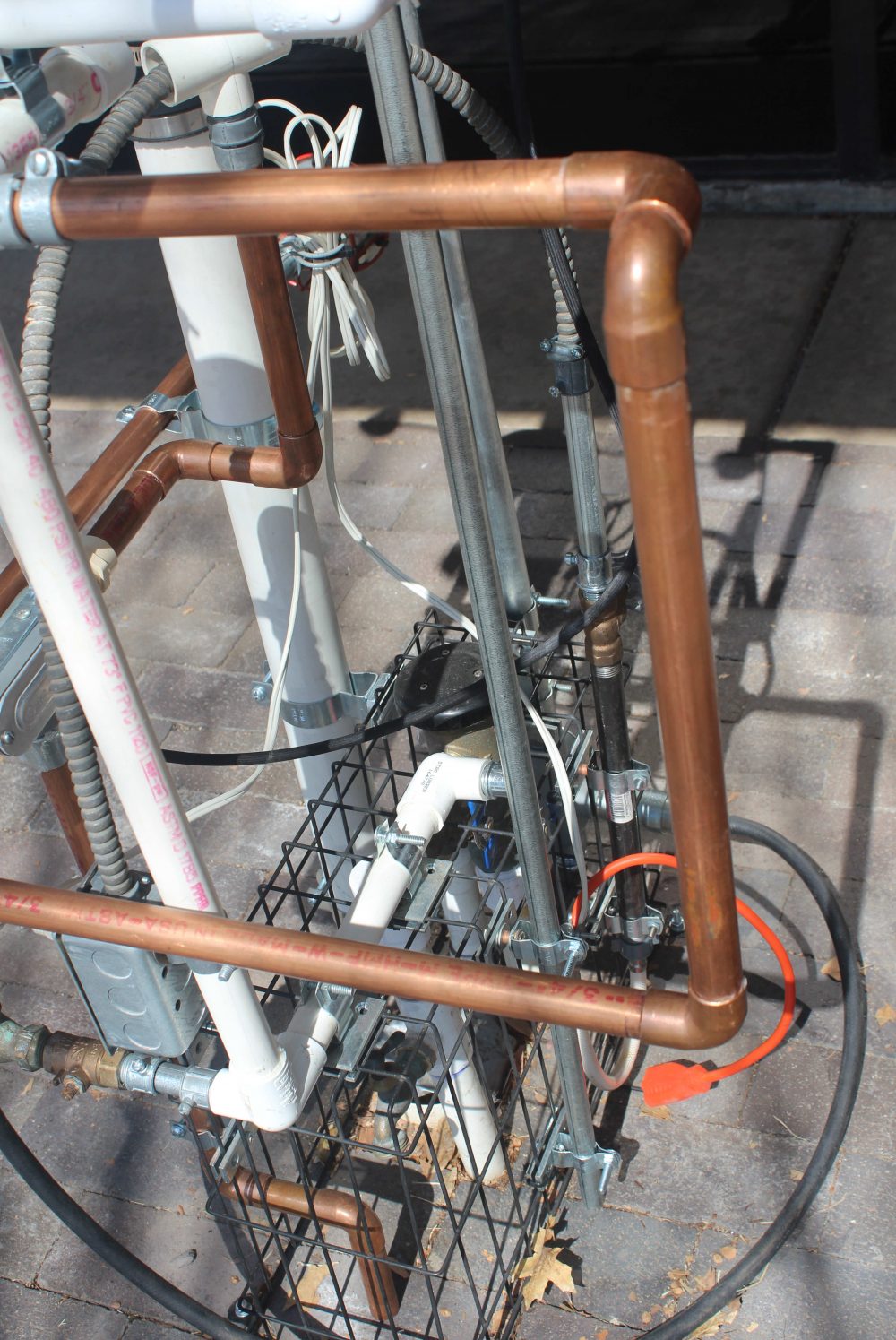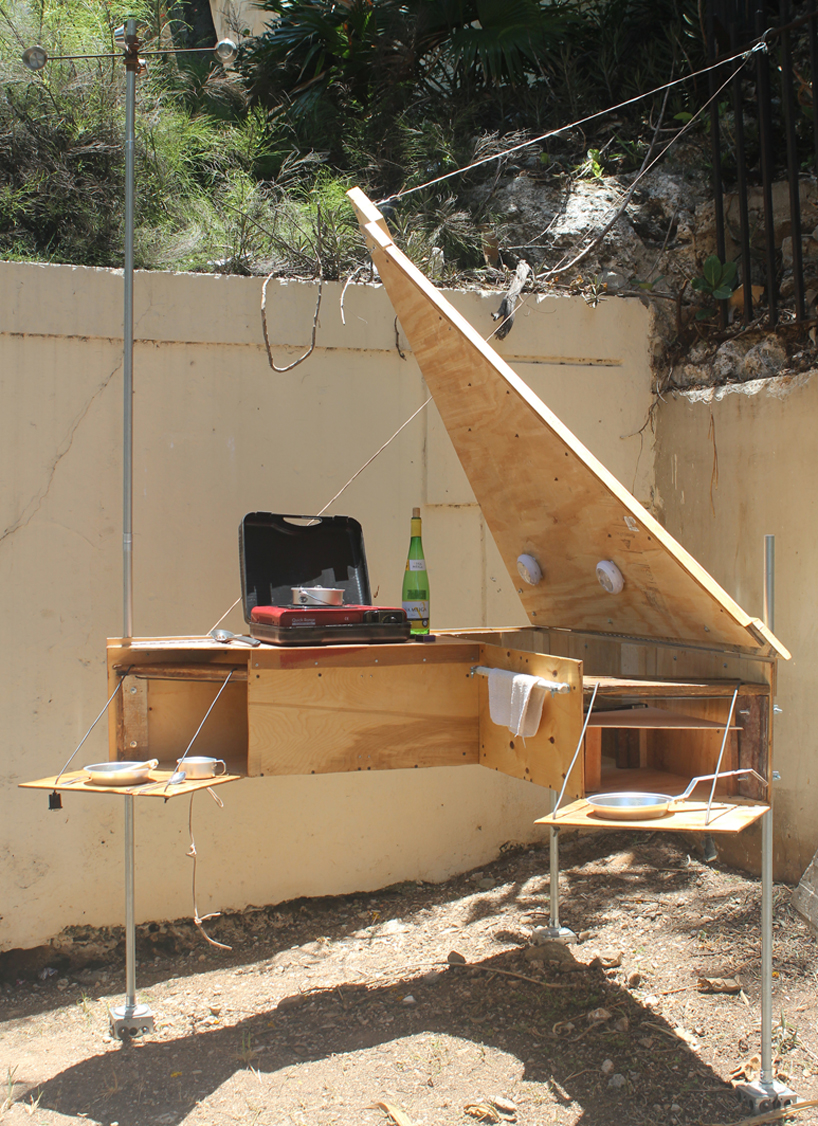BIENAL DE LA HABANA / ENTRE, DENTRO, FUERA [BETWEEN, INSIDE, OUTSIDE]
Pabellón Cuba, Habana Cuba, 05.22.15 - 06. 22.15
In a three-part concept that focuses on the triad of our primary requirements for shelter -- KITCHEN, BEDROOM and WORKSPACE -- Eat / Sleep / Work: the House, Deconstructed questions the relationships between idealized spatial efficiency and proximity, residential circulation patterns, and our own self-imposed individually and culturally directed boundaries between public and private space. Using the construct of 'City as Home' as a theoretical point of entry, this project examines the wide range of vernacular and highly personalized architectural solutions that humans have developed to provide sanctuary for themselves within a larger system.
The installation was constructed, over the course of a month, almost entirely from materials salvaged from the streets of Havana and Wichita, Kansas, USA. The artist brought with her a few hand tools, miscellaneous fasteners, dumpster-dived construction waste, and objects she judged would be difficult to find in Cuba (such as a camp stove, sleeping bag, LED light fixtures and electrical boxes); otherwise, all the components were either sourced or manufactured in Havana.
The foundation system for the storage unit and kitchen is an original design by the artist: a multi-use structural system inspired by the roots of trees, easily fabricated from common construction materials. Click here for more information.
All three rooms were inhabited by the artist during the exhibition, and were available for interaction with the biennial visitors. This is the second of a series the artist has entitled "Insertions", where she creates viable living environments in programatically obsolete or socially-invisible spaces.
Project logos designed by Lauren Osoba.
A FACEBOOK blog was created and updated during the exhibition.
“The latest in a series of similar installations, Eat / Sleep / Work... is the next formalized interaction with an anthropomorphized brick-and-mortar City that has been transformed into a capricious organism who can be tricked into revealing its secrets. These Insertions are responsive offerings, intended as a conciliatory gesture towards the restoration of equilibrium.”
- The Girl Who Lived in A Sign
Artist Statement, as written before trip to Cuba:
In a three-part concept that focuses on the triad of our primary requirements for shelter--kitchen, bedroom and workspace--"Eat/Sleep/Work: the House, Deconstructed" will question the relationships between idealized spatial efficiency and proximity, residential circulation patters, and our own self-imposed individually and culturally directed boundaries between public and private space. Using the construct of 'City as Home' as a theoretical point of entry, this project examines the wide range of vernacular and highly personalized architectural solutions that humans have developed to provide sanctuary for themselves within a larger system.The latest in a series of installations that the artist has, thus far, placed in various locations throughout Canada and the midwestern United States, "Eat/Sleep/Work" is her next interaction with an anthropomorphized brick-and-mortar City that has been transformed into a capricious organism who can be tricked into revealing its secrets. These 'Insertions' are the artist's responsive offerings, intended as a conciliatory gesture towards the restoration of equilibrium.
Artist Statement, re-conceived after arrival in Havana:
Due to a bureaucratic error that prevented the crates containing all my building materials and most of my tools from leaving customs for 10 days, my project has moved into the realm of process-based performance art. It is Sunday the 17th today, and the biennial opens on Friday the 22nd, so if I get my boxes by tomorrow, the 18th, which is doubtful, I may be able to begin construction on Tuesday. If so, I plan to complete the bedroom structure by Friday, the only site in the main pavilion, and will then continue with the kitchen and workspace, sited outside of the pavilion, until my departure on the 31st.I have shipped almost 300kg of salvaged/surplus materials from the US because I couldn't be sure that there would be any salvageable materials here, due to the fact that all resources are precious in this economy, and construction waste is valuable and extremely rare as a result. Furthermore, there was no guarantee that a wide variety of tools and fasteners would be available in Cubano hardware stores, so I packed the crates with absolutely everything that I could imagine I'd need. I'm very glad I did that now, as dumpster-diving is certainly not as fruitful here as it is in North America, and finding specific items in the ferreraterias is almost impossible.
However, due to the extraordinarily late, or even conceivably improbable, delivery of my crates, I have had an opportunity to find some items of use in the streets and re-configure my thesis to respond to the actual conditions I find myself working within.
My project has therefore adapted to a corollary concept: I am combining the detritus of two countries at opposite ends of the spectrum between communism and capitalism into units that satisfy our primary requirements for shelter; a place to sleep and procreate safely, a place to prepare food and store surplus resources, and a place within which one can create the tools to perpetuate one's existence.
The Girl, her invisibility achieved in this new place after more than a week of her customary interaction and integration, is able to insert these components (secrets) into the city without the need to identify boundary conditions. The city naturally delineates the spaces of the rooms, and of the home itself—the permeability and transparency, as well as the locational changeability, of these walls question our perceptions of residential privacy, security, and individual autonomy.
As the biennial progresses, the three rooms, constructed from these two distinctly different stockpiles of materials, will slowly emerge into the living city, coalesce into habitable devices, and then be reabsorbed back into the organism, as the structures themselves are decommissioned by Habaneros who foresee a use for the constituent materials.
The gradient that flows between private and public space is also investigated and deconstructed. The most private of the rooms, the bedroom, becomes the most transparent in this project, and the most communal and public of the rooms, the kitchen, is conceived as the most private. Paradoxically, the notion of transparency, due to the extreme degradation of the buildings and infrastructure, as well as the climate and the culture of Cuba, is an analogy that may be applied to almost all aspects of this place, excepting only the political and economic structures.
Consequently, decomposition and disintegration are paramount concerns in the city of Havana, so each room will also function as a stabilization device, specific to the environments in which they are built. The city will further move and crumble around these pieces, until they are either absorbed or adapted or disintegrate themselves, adding one more layer to this utterly unique urban palimpsest.



